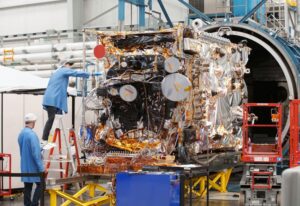
The U.S. Space Force and Northrop Grumman [NOC] are highlighting recent developments in the service's effort to launch two Enhanced Polar System-Recapitalization (EPS-R) payloads next year to improve military communications over the North Pole. The EPS-R payloads are to launch aboard two Norwegian Arctic Satellite Broadband Mission (ASBM) satellites--launches that Space Force has said will save the service more than $900 million and field advanced polar satellite communications three years ahead of a traditional acquisition program. In March, Space Force's…














